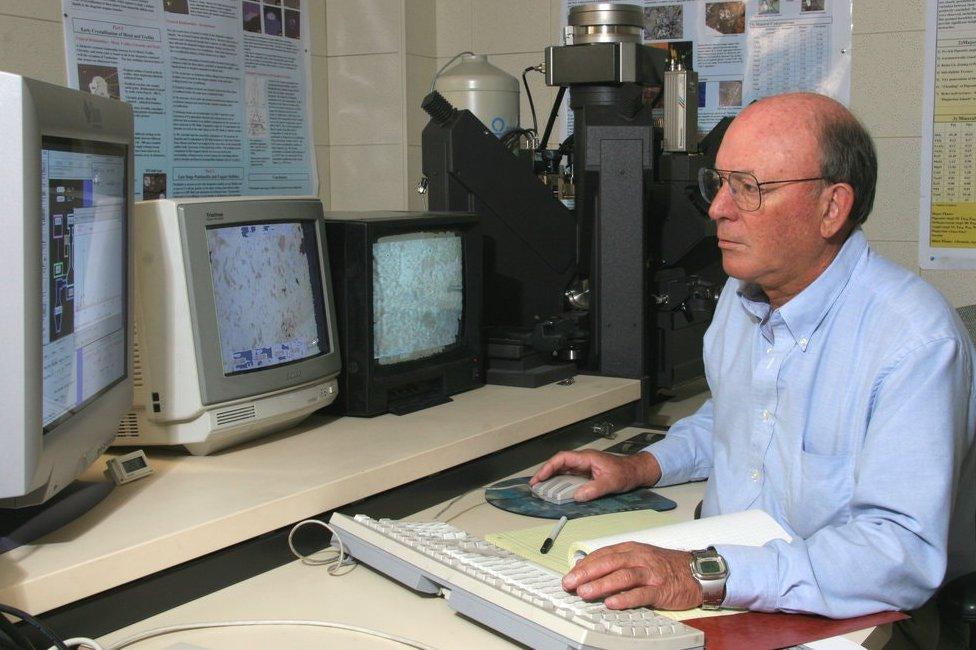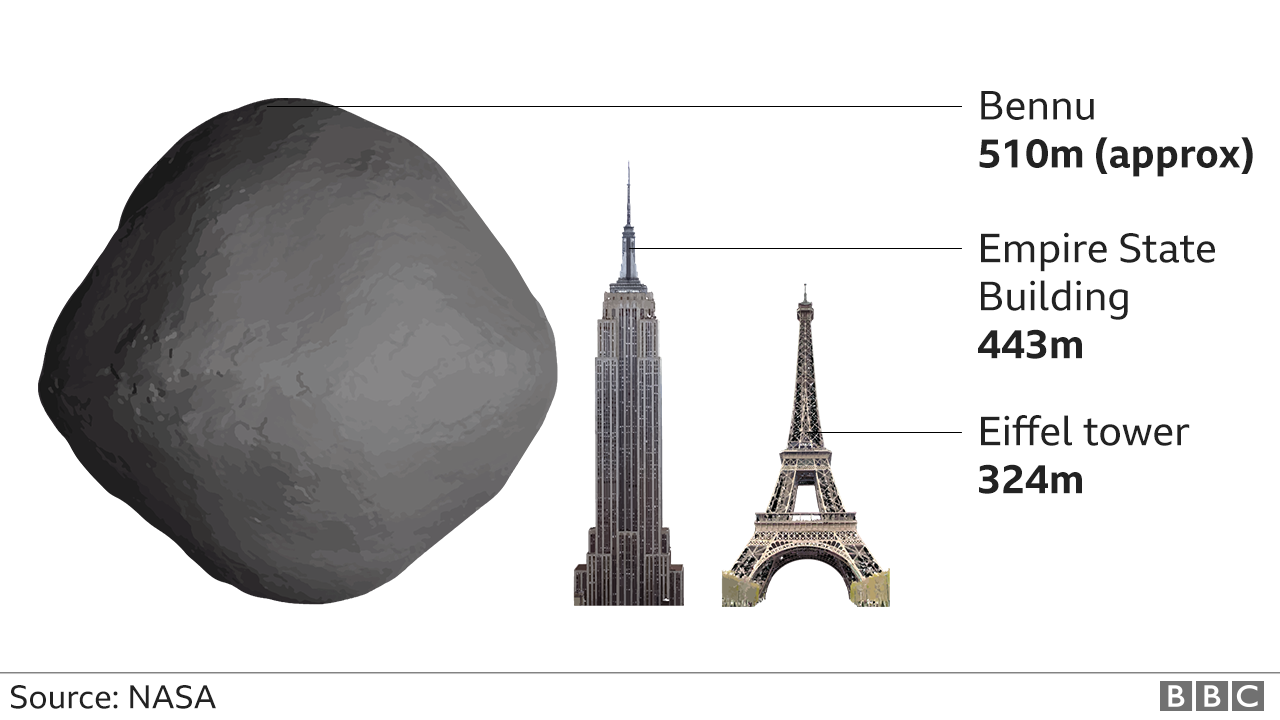Osiris-Rex: Nasa asteroid mission confident of success
- Published
Sampling an asteroid: This image sequence is speeded up and repeated
"We really did kind of make a mess."
That was Dante Lauretta's take after reviewing the first pictures to come down from Nasa's Osiris-Rex probe, external following its bid to grab a sample from asteroid Bennu on Tuesday.
Dust and grit flew in all directions but that was good news, enthused the University of Arizona professor.
"Everything that we can see from these initial images indicates sampling success. So in case you can't tell, I'm pretty excited."
The principal investigator's team now has to work out precisely how much material Osiris-Rex might have lifted from the surface of 500m-wide Bennu.
If it's a kilo or more, it would represent the biggest extra-terrestrial sample cache since the Apollo astronauts gathered rocks from the Moon some 50 years ago.
But even a smaller amount would still be a great prize.
Bennu is a very primitive object, with chemistry preserved from the dawn of the Solar System more than 4.5 billion years ago. As such, it can tell us a great deal about how the Sun and the planets came into being.
Controllers at Lockheed Martin celebrate the touch and go
Osiris-Rex used what had been described as a "reverse vacuum cleaner" to acquire its clutch of "soil".
More properly called the Touch-and-Go Sample Acquisition Mechanism, or Tag-Sam, this device comprised a long boom with a ring-shaped collection chamber on the end.
The idea was to deliver a squirt of nitrogen when the Tag-Sam made contact with the asteroid.
The hope was this gas would stir up Bennu's fragmented surface, leading to a considerable number of rocky pieces getting trapped inside the collection chamber.

The mess: Dust and grit are thrown in all directions as the sampling head makes contact

The downlinked pictures certainly suggested the strategy was the right one.
Osiris-Rex may have been in contact with Bennu for only six seconds before retreating, but the sampling ring was flat and stable, and even pressing into the soil slightly. This should have maximised the chances of retaining material.
Rich Burns, Nasa's project manager on the mission, lauded the way his team managed to put the probe in just the right place on Bennu - almost exactly at the centre of the targeted sampling zone.
"We're over 320 million km away from Earth at this point, and we touched this asteroid within a metre of where we intended to. So that's extraordinary and a real credit to our team," he told reporters.

Engineers will spin the probe to try to gauge the mass of material taken on board
On Thursday, engineers will command the spacecraft to take detailed pictures of the sampling ring to try to see what it contains.
And then on Saturday, they'll make Osiris-Rex spin itself around with the Tag-Sam outstretched. Any extra mass on board will change the level of torque required to turn the probe, compared with the level that was needed to perform the same rotation exercise prior to sample acquisition.
"We are expecting a final sample mass measurement report on Monday," explained Sandy Freund, the mission operations manager at Lockheed Martin, the company that manufactured Osiris-Rex.
It seems highly likely that Osiris-Rex has achieved its objective of taking at least 60g off Bennu. But if it hasn't, there are two more nitrogen bottles still aboard the probe to facilitate further sampling bids. And there's plenty of time, too.
The spacecraft is not scheduled to depart Bennu for Earth until April next year. A landing on Earth for any rock cache in this timeline would be late 2023.
Allow X content?
This article contains content provided by X. We ask for your permission before anything is loaded, as they may be using cookies and other technologies. You may want to read X’s cookie policy, external and privacy policy, external before accepting. To view this content choose ‘accept and continue’.

Prof Lauretta once again on Wednesday paid tribute to the British scientist who conceived Osiris-Rex.
This was Bristol-born Michael Drake who held senior science positions at the University of Arizona in Tucson.
He worked up the concept for the mission but sadly died in 2011, aged 65, just months after Nasa had green-lit the project.
"I'm pleased to see that my dad's legacy is being honoured at this exciting time in Osiris-Rex's mission," Michael Drake's son, Matt Drake, told BBC News.
"My father's idea to study near-Earth asteroids as a means of peering back in time to the birth of the Solar System finally came to fruition during [Tuesday's] Tag event.
"As the principal investigator of this team from its inception until his passing almost 10 years later, he would have been incredibly proud of his team's accomplishments."
Osiris-Rex carries a plaque of remembrance to Michael Drake.

Michael Drake was the instigator behind the Osiris-Rex mission

Jonathan.Amos-INTERNET@bbc.co.uk, external and follow me on Twitter: @BBCAmos, external